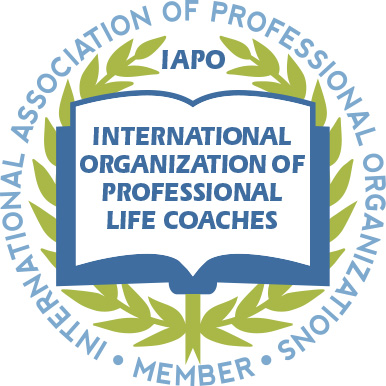Arrested development refers to a condition in which a person’s emotional and psychological growth is hindered or halted during one of the normal stages of maturation. This phenomenon can have profound impacts on a person’s overall well-being and interpersonal relationships. Today’s post focuses on the stages of arrested development and the challenges faced by those who experience it.
Arrested development is a common challenge, though there is little to no data available regarding the prevalence of it in the general population.
It also often presents in conjunction with other mental health conditions that may arise from unresolved childhood trauma.
These other issues may be either caused or exacerbated by arrested development itself.
Since arrested development has such a profound impact on our quality of life, it’s important we do what we can to resolve it in ourselves or in those we love.
The Stages of Arrested Development
People who experience arrested development tend to move through phases of emotions as they attempt to grapple with the challenges they face. These stages may present in order, but progress through them is not necessarily linear.
Also, additional trauma, stress, or other factors can cause people with arrested development to regress from time to time.
Nevertheless, at some point, many people who struggle with emotional immaturity will go through most if not all of the stages of arrested development described below.
1. Denial and Self-Deception
At the initial stage of arrested development, those who are affected by it often struggle with denial and self-deception.
They may find it difficult to acknowledge and accept the reality of their emotional stagnation.
This can manifest as an unwillingness to confront personal issues or a persistent belief that they are functioning at a level consistent with their peers.
2. Emotional Turmoil and Confusion
As arrested development progresses, people may experience intense emotional turmoil and confusion.
They may struggle to navigate complex emotions and have difficulty forming healthy relationships.
This stage is often characterized by a sense of being stuck in the past, unable to move forward or mature emotionally.
3. Dependency and Avoidance
During the dependency and avoidance phase, people may rely heavily on others for emotional support and guidance.
They may avoid taking responsibility for their actions and seek comfort in the familiar rather than exploring new opportunities for growth.
This dependency can hinder their ability to develop autonomy and self-sufficiency.
4. Self-Isolation and Social Withdrawal
In the fourth stage of arrested development, those who suffer from it may withdraw from social interactions and isolate themselves from others.
This withdrawal can be a defense mechanism to avoid facing the challenges and expectations of adulthood.
The fear of judgment and rejection often drives them to retreat into their own world, which further hampers their personal growth.

5. Lack of Purpose and Direction
At this stage, people tend to struggle with a lack of purpose and direction in life.
They may find it challenging to set goals, make decisions, or pursue meaningful endeavors.
This can lead to feelings of aimlessness and dissatisfaction, as they struggle to find their place in the world.
6. Final Stages of Arrested Development: Stagnation and Regret
The final stage of arrested development is marked by a deep sense of stagnation and regret.
Those who struggle with arrested development may feel trapped in a perpetual cycle of missed opportunities and unfulfilled potential.
They may experience profound sadness and longing for the personal growth they were unable to achieve.
The Stages of Arrested Development
Arrested development can have significant repercussions on a person’s overall well-being and life satisfaction.
Understanding the stages of arrested development can help people who experience it, and those around them, to recognize the signs and seek appropriate support and intervention.
By acknowledging and addressing these challenges, it is possible to take steps towards personal growth, emotional maturity, and a more fulfilling life journey.
Arrested Development Additional Resources
A questionnaire to determine if someone may have signs of arrested development should be used with caution, as mental health assessments should ideally be conducted by trained professionals.
However, it can be helpful to use an arrested development questionnaire as an initial screening tool, to learn more about whether professional help is needed.
Stages of Arrested Development
Above all else, it is essential that if you suffer from arrested development, you begin to embrace the notion that it is not your fault.
Others may criticize you for being immature or not “growing up”. But it’s not on you.
At some point, you did not receive the love and support you needed as a child.
But it’s not too late to address that, resolve past trauma, overcome arrested development, and thrive.
How to Overcome Arrested Development
Overcoming arrested development can be facilitated by accessing a variety of resources that support healing and self-discovery. Therapy with a qualified mental health professional, such as a psychologist or counselor specializing in trauma-informed care, can provide a safe space for processing past experiences, addressing maladaptive patterns, and fostering personal growth.
Self-help books, workshops, and online resources focused on topics such as emotional intelligence, resilience, and inner child healing can offer valuable insights and practical tools for overcoming arrested development.
Engaging in mindfulness practices, meditation, yoga, or expressive arts therapy can also promote self-awareness, emotional regulation, and integration of fragmented aspects of the self affected by past trauma.
Peer support groups, community organizations, and mental health helplines are additional resources that can offer connection, validation, and encouragement on the journey towards overcoming arrested development and reclaiming agency over one’s personal growth and well-being.
Note: You are never alone. Call or text 988 or chat 988lifeline.org to reach a 24-hour crisis center, text MHA to 741741, call 911, or go to the nearest emergency room.
Thank you for reading.
If you haven’t yet subscribed, please visit KindCompassCoach and enter your email address so you never miss a post.
As Amazon Associates, we may receive a small commission (at no cost to you) for items purchased through links in this post.

Joan Senio is the founder of KindCompassCoach. Joan’s career includes clinical healthcare plus 20+ years as an executive in a nationwide health care system and 15 years as a consultant. The common threads throughout Joan’s personal and professional life are a commitment to non-profit organizations, mental health, compassionate coaching, professional development and servant leadership. Joan has had the privilege of mentoring early and mid-career professionals as well as current and future executives and leaders. She is a member of the International Organization of Life Coaches, serves as a thought-leader for KuelLife.com and is also a regular contributor to PsychReg and Sixty and Me. You can read more about Joan here: Joan Senio.





No Responses